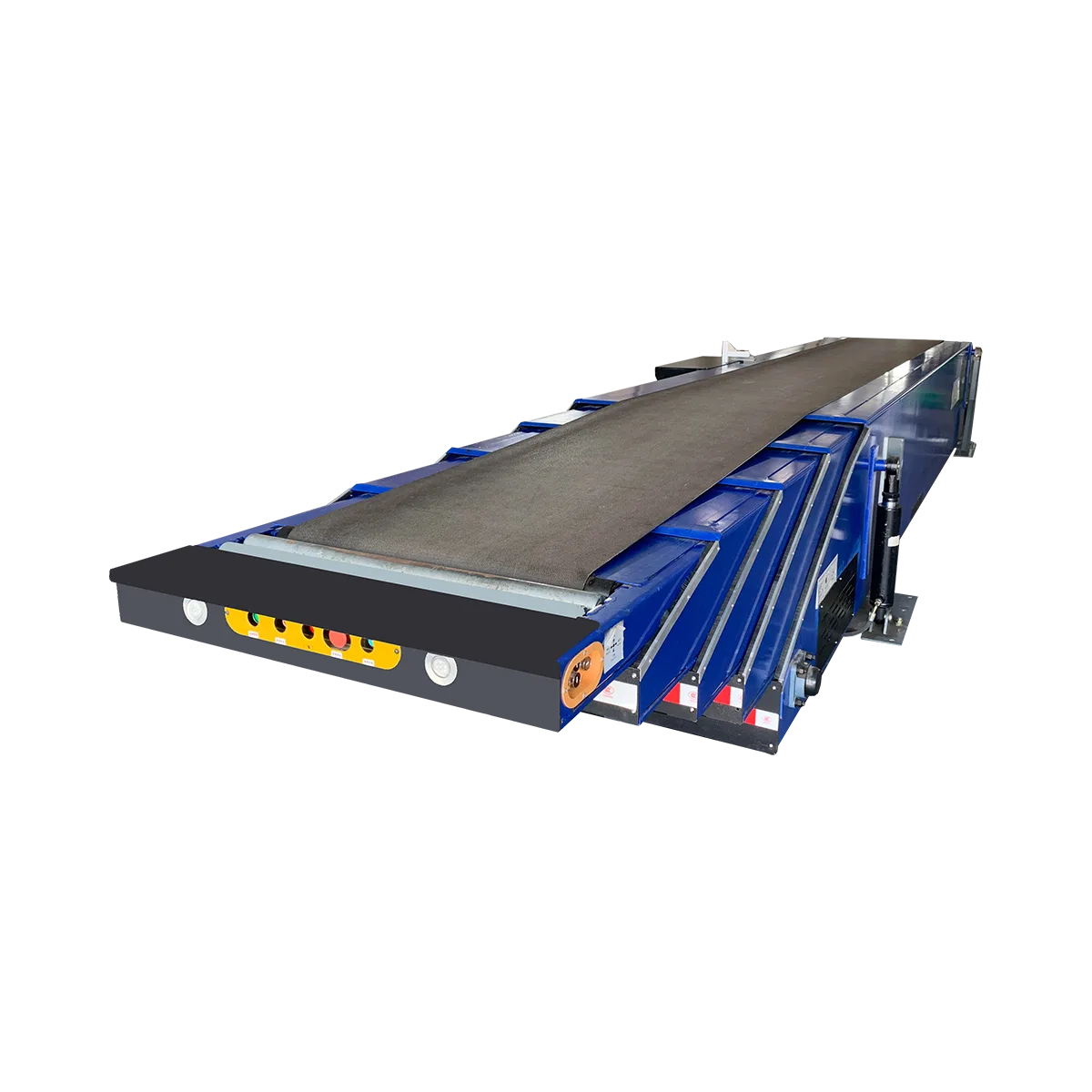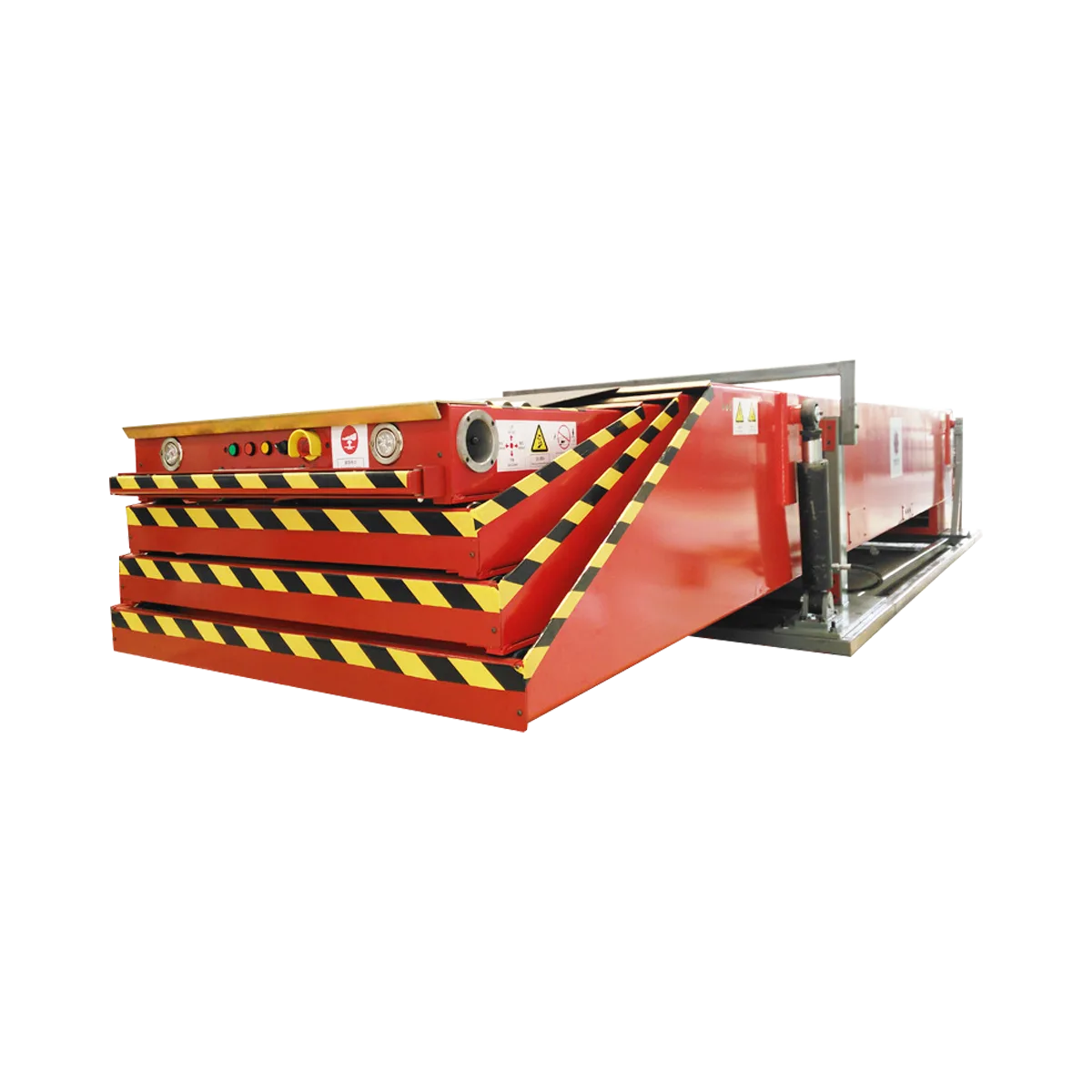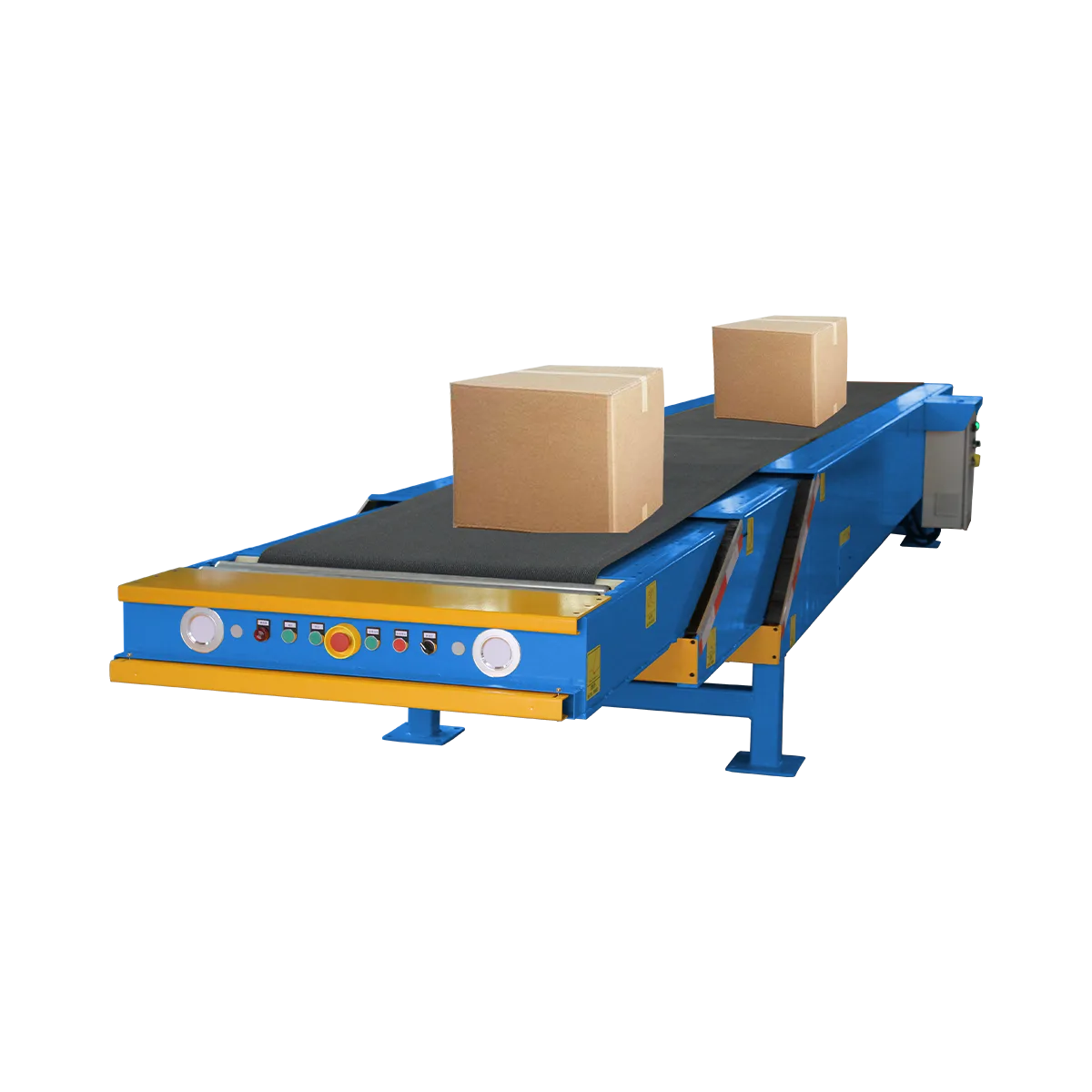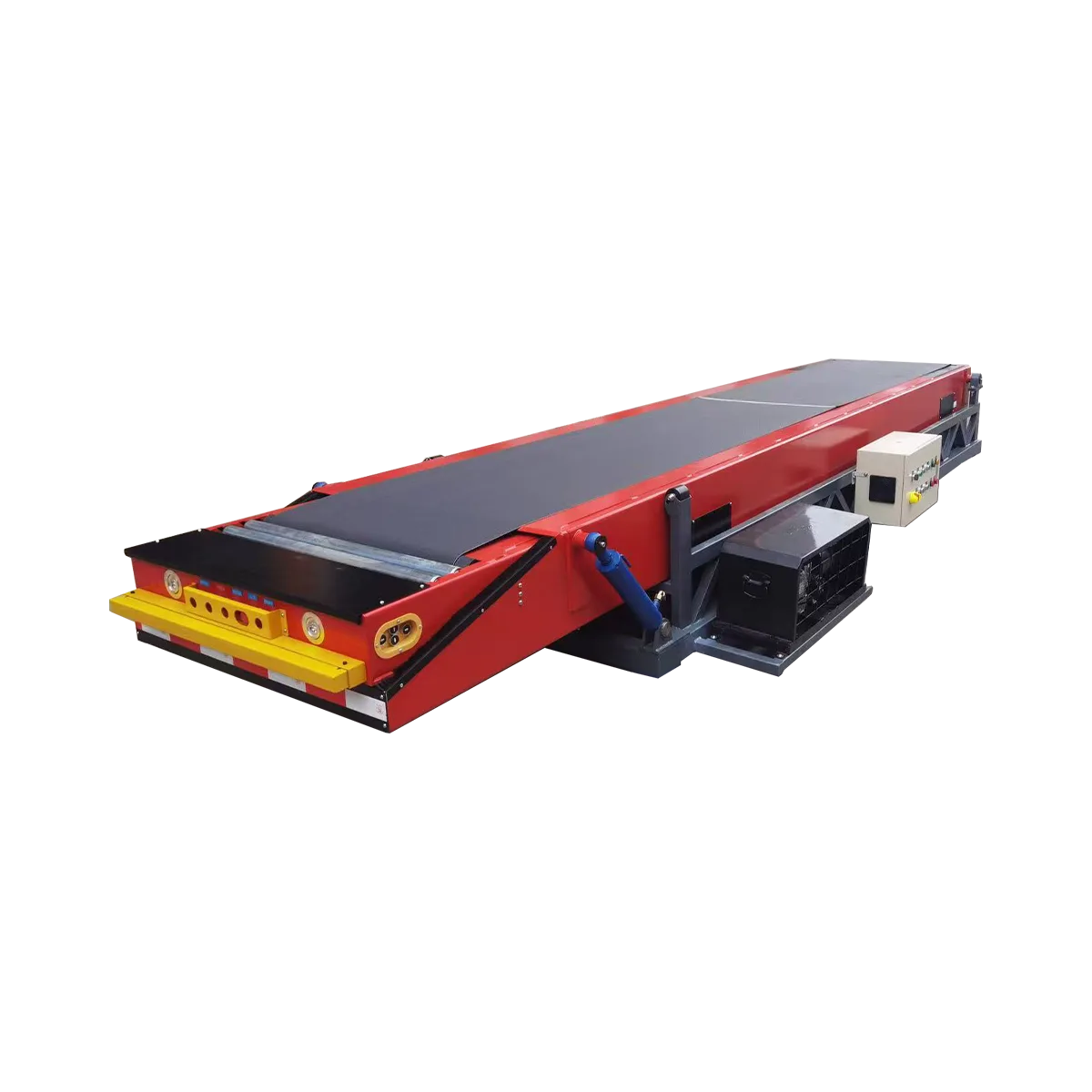Telescopic Conveyor Options Explained: Hydraulic Lift, Operator Platform, and More
Explore essential telescopic conveyor features from hydraulic lift systems to operator platforms that boost loading efficiency and reduce labor costs in warehouse operations.
Related Products
-
TeleScopic Conveyor – 5 SectionsCollapsed LengthExtended LengthLoad Capacity
60 kg/m
Applicable GoodsFlat-bottomed Goods
Bagged Goods
-
TeleScopic Conveyor – 4 SectionsCollapsed LengthExtended LengthLoad Capacity
60 kg/m
Applicable GoodsFlat-bottomed Goods
Bagged Goods
-
TeleScopic Conveyor – 3 SectionsCollapsed LengthExtended LengthLoad Capacity
60 kg/m
Applicable GoodsFlat-bottomed Goods
Bagged Goods
-
TeleScopic Conveyor – 2 SectionsCollapsed LengthExtended LengthLoad Capacity
60 kg/m
Applicable GoodsFlat-bottomed Goods
Bagged Goods
You’ve made the strategic decision to invest in a telescopic conveyor system for your loading and unloading operations. Now comes the critical next step: understanding the available options that can transform this equipment from a basic conveyor into a comprehensive productivity solution. The right combination of features can dramatically increase throughput, improve worker safety, and provide a faster return on investment.
Telescopic conveyor systems are already impressive in their standard configuration, with their ability to extend deep into trucks and containers while providing smooth, powered material transport. However, the addition of key options like hydraulic lift functionality, operator platforms, and advanced control systems can elevate their performance to new heights, particularly in high-volume logistics environments.
The Hydraulic Lift/Tilt Function: Reaching New Heights
What It Is
The hydraulic lift function is an advanced feature that allows the boom’s discharge end (the section that extends into the truck or container) to be raised or lowered with precision. This hydraulic system creates an adjustable incline at the end of the conveyor, providing vertical flexibility that complements the horizontal reach of the telescopic design.
Why You Need It
The hydraulic lift option delivers several critical advantages:
- Efficient Stacking: Operators can easily create organized stacks inside trucks by adjusting the height of the discharge point, allowing packages to be gently deposited at various heights
- Full Container Utilization: Reach the uppermost areas of containers without manual lifting, maximizing the use of available space
- Reduced Worker Strain: Eliminate the need for workers to lift heavy items to upper shelves or stack positions
- Adaptable to Cargo Variations: Quickly adjust the discharge height based on the current loading pattern or package type
- Improved Package Handling: Control the descent of packages to prevent drops or impacts that could cause damage
The hydraulic lift system operates smoothly via the conveyor’s control panel, allowing operators to make precise adjustments as loading conditions change. With a typical adjustment range that can reach the top of standard shipping containers, this feature ensures that no space goes unutilized during the loading process.
The Operator Platform: Moving With The Action
What It Is
The operator platform is a sturdy standing area installed at the end of the telescopic conveyor, designed to safely support a worker. This platform extends and retracts along with the conveyor, allowing the operator to travel with the equipment as it moves into and out of the truck or container.
Why You Need It
The operator platform delivers significant operational benefits:
- Deep Container Access: Allows workers to travel deep into containers without repeatedly walking in and out
- Continuous Operation: Enables uninterrupted loading/unloading as the worker remains with the discharge point at all times
- Optimized Positioning: Workers can arrange items precisely at the point of delivery rather than reaching or stretching
- Reduced Fatigue: Eliminates the need for workers to constantly move between the conveyor and the stacking area
- Enhanced Safety: Provides a stable, secure platform with proper guardrails for worker protection
- Increased Productivity: Can improve throughput by 25-40% compared to operations without an operator platform
For operations handling large volumes or requiring precise placement of goods, the operator platform is not just a convenience—it’s a productivity multiplier that can significantly reduce the time and labor required for each loading or unloading cycle.
Other Key Options: Enhancing Control and Safety
Beyond the hydraulic lift and operator platform, several other options can further enhance the functionality and efficiency of your telescopic conveyor system:
Remote Control Systems
Remote control capability allows operators to manage the conveyor’s extension, retraction, and belt movement from anywhere in the truck or loading area. This feature provides:
- Freedom of movement for the operator
- Ability to control the system while observing from optimal vantage points
- Reduced walking distance during operations
- Improved responsiveness to changing loading conditions
The wireless remote typically includes all essential functions found on the main control panel, giving operators complete command of the system without being tied to a fixed position.
Integrated Lighting Systems
Working inside trucks and containers often means dealing with limited visibility. Front-end LED lighting systems illuminate the work area, providing:
- Enhanced visibility in dark container interiors
- Improved safety for workers operating inside vehicles
- Better quality control as items can be clearly seen
- Extended working hours into early morning or evening
- Reduced eye strain for operators
These lighting systems are typically integrated into the front section of the telescopic conveyor, ensuring that light is always directed to the active work area.
Speed Control Systems
Variable frequency drives allow precise control over conveyor belt speeds, offering:
- Adjustable speeds from 10-40 m/min
- Ability to match conveyor speed to worker pace
- Gentle handling for fragile items
- Faster throughput for standard packages
- Energy efficiency through optimized motor operation
Counting Systems
Integrated package counters provide real-time tracking of throughput, delivering:
- Accurate counts of processed items
- Performance metrics for operational analysis
- Data for productivity reporting
- Verification of shipment completeness
Specialized Belting Options
While standard conveyor belts work well for most applications, specialized options include:
- Cleated belts (also called “camel backs”) that prevent items from sliding on inclines
- High-friction surfaces for handling unusual package shapes
- Specialized materials for handling specific product types
Creating the Ultimate High-Speed Loading Workflow
When properly configured with the right combination of options, a telescopic conveyor system creates a seamless, efficient workflow that maximizes productivity while minimizing worker strain.
Here’s how these options work together in a typical high-volume loading operation:
- Initial Setup: The telescopic conveyor extends into the truck or container, with the hydraulic lift positioned at the appropriate starting height
- Worker Positioning: An operator stands on the platform at the discharge end, while another worker feeds packages onto the conveyor at the entry point
- Dynamic Adjustment: As loading progresses, the operator uses the remote control to:
- Adjust the conveyor extension to reach optimal loading positions
- Modify the hydraulic lift height to create efficient stacking patterns
- Control conveyor speed based on package flow and arrangement needs
- Visibility and Safety: Integrated lighting ensures clear visibility throughout the container, even in areas far from the entry point
- Continuous Operation: The operator remains on the platform throughout the loading process, eliminating wasted movement and maintaining a consistent workflow
- Progress Tracking: Package counting systems provide real-time feedback on throughput and completion status
This integrated approach can achieve loading rates of:
- 3,500-5,000 small parcels per hour
- 2,500-3,500 medium boxes per hour
- 2,000-2,500 large cartons per hour
For operations handling more than 1,000 packages daily, a properly configured telescopic conveyor system typically delivers return on investment within 6-12 months through labor savings and efficiency improvements.
Comparing Configuration Options
| Feature | Basic Model | Enhanced Model | Premium Configuration |
|---|---|---|---|
| Hydraulic Lift | No | Yes | Yes with extended range |
| Operator Platform | No | Basic platform | Extended platform with safety rails |
| Remote Control | No | Basic functions | Full function wireless control |
| Lighting | No | Front-end only | Extended lighting system |
| Speed Control | Fixed speed | Variable speed | Programmable speed profiles |
| Counting System | No | Basic counter | Advanced tracking system |
| Typical Application | Low volume | Medium volume | High volume/distribution centers |
Conclusion: Maximizing Your Telescopic Conveyor Investment
While a basic telescopic conveyor provides significant advantages over manual loading methods, the strategic addition of options like hydraulic lift functionality, operator platforms, and advanced control systems can dramatically multiply its effectiveness. These features transform the equipment from a simple conveyor into a comprehensive loading solution that addresses the full spectrum of operational challenges.
For operations handling substantial package volumes, particularly those loading deep into trucks or containers, these advanced options quickly pay for themselves through increased throughput, reduced labor requirements, and improved worker safety. By carefully selecting the options that align with your specific operational needs, you can create a custom-tailored system that delivers maximum performance and value.
The most successful implementations typically combine multiple complementary options rather than focusing on a single feature. This integrated approach ensures that your telescopic conveyor system becomes a true productivity multiplier, capable of transforming your loading dock operations and providing a sustainable competitive advantage.
Frequently Asked Questions
How much additional cost do hydraulic lift options add to a telescopic conveyor?
The hydraulic lift option typically adds 15-25% to the base cost of a telescopic conveyor, depending on the lift range required and the size of the conveyor system. Despite this initial investment, operations handling over 1,000 packages daily usually recoup this cost within 6-12 months through efficiency gains.
Can the operator platform support more than one worker?
Standard operator platforms are designed to safely support one worker (typically rated for 150kg). For operations requiring multiple workers at the discharge point, custom platforms with higher capacity ratings can be specified, though this may affect the overall extension capacity of the system.
Are remote controls reliable in busy warehouse environments?
Modern industrial remote control systems use frequency-hopping technology and unique addressing to prevent interference from other equipment. The typical operating range is 50-100 meters, with direct line-of-sight providing the most reliable performance. Battery life is generally 8-12 hours of continuous use.
What maintenance is required for the hydraulic lift system?
The hydraulic lift system requires minimal maintenance beyond regular inspection of hydraulic fluid levels (quarterly) and checking for leaks or seal wear (annually). The hydraulic components are designed for the same service life as the conveyor itself, typically 8-10 years with proper care.
Can these options be added after initial purchase, or must they be specified when ordering?
Major options like the hydraulic lift and operator platform should be specified at the time of original purchase, as they require structural modifications to the conveyor frame. Secondary options like remote controls, lighting systems, and counting systems can often be added as aftermarket upgrades, though factory installation is always preferable for optimal integration.
Table of Contents
Recent Posts
Discover how to select the perfect conveyor width for your warehouse operations. Our expert guide helps you match box sizes to conveyor dimensions for optimal efficiency and fewer jams.
Discover effective outdoor conveyor solutions for connecting warehouse to truck across open yards. Our guide to all-weather yard logistics will transform your loading efficiency.
Discover the ideal van loading conveyor solution for Sprinter, Transit and other delivery vehicles. Our Micro Hydraulic Conveyor system boosts efficiency while saving labor costs.





